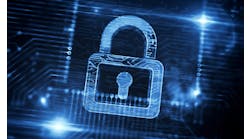The idea of automotive electrification draws significant emotions from supporters on both sides. However, even a cursory look at the number of start-ups and OEMs making significant commitments to revisiting how future automobiles operate lends credence to the movement.
Is it going to happen with the flick of the switch? Absolutely not. A number of valid concerns still exist including the need for a stable and widespread infrastructure capable to adequately supporting the anticipated shift. And the number of real purchases demonstrate as much.
As alternative fuel sources grow market share, the most likely sector to experience initial growth will be the commercial space. This is true in part because of the ability to maintain more controlled growth and serve as a proving ground. As we have covered at IndustryWeek, the dedication cuts across the entire realm of delivery providers. Amazon has made commitments. UPS has invested heavily. USPS is plugged in. GoFor has also announced its commitment.
Read on as Brad Rollo, CEO of GoFor discusses the role electrification can play within the commercial delivery space.
IW: What are the keys to transitioning last-mile services to EVs? Why is this important?
Rollo: There are three keys to a successful transition to EVs. The first is that the retailer or business looking to transition, as well as their chosen last-mile delivery partner, share similar values around what a successful and sustainable EV program looks like. This upfront alignment will help with the creation of a green logistics marketplace that also produces better results.
The second is around the vehicles. Choosing equipment is more than an ROI equation -- it’s about ease and simplicity. EV providers should offer straightforward bundled solutions and services combining trucks, maintenance and charging into a single price, removing the complexity of switching to an unfamiliar platform and improving the reliability of vehicles. Bundled solutions give owners and operators the ability to see everything they need in one place, without the complexity of an ad-hoc approach.
The third key is making EVs more accessible. Many logistics providers have not implemented their EV plans due to issues with affordability and lack of infrastructure to support their use. To unlock benefits like a lower total cost of ownership, reliability and faster, easier delivery, there needs to be investment in infrastructure, like charging stations, that supports widespread adoption.
IW: What do you see as the long-term benefits of this transition?
Rollo: The long-term benefits of transitioning the last-mile to EVs include reducing emissions, the ability for drivers to make more money, and lower total cost of ownership due to less frequent maintenance and lower fuel costs.
Electrified fleets have seen significant benefits for driver retention, safety and health, environmental protection and productivity gains. This is why GoFor has partnered with Royale EV, it’s our start to move us towards EV based delivery this year. It’s part of GoFor’s commitment to the emerging green logistics marketplace and our aim to reduce environmental and energy footprint in logistics, while offering superior return-on-investment.
Delivery drivers typically use more than 200 gallons of gasoline per month in a standard cargo van, which adds up over the long term, and EVs require less frequent repairs and maintenance. As states move towards carbon-based tax systems, fleet operators will have to transition to EVs which will allow for a lower total cost of ownership and environmental protection. Early transitioners will win more market share, better routes and gain more experience benefiting them in the long run.
IW: What challenges or obstacles remain?
Rollo: The biggest challenges remaining for last-mile and logistics companies to electrify their fleets are accessibility and affordability. At this time, EV delivery vehicles are only in the early stages of production, not yet mass produced. Without readily available supply of EVs, the transition will take time as larger delivery vehicles become electrified in addition to passenger vehicles. This is also a challenge for companies looking to accommodate the upfront costs of electrifying an entire fleet of delivery and manage the realities of ongoing maintenance like charging. Soon, almost half of all vehicles on the road are anticipated to be delivery vehicles and with more vehicles on the road overall it is imperative for them to be green. In states and provinces that have moved to carbon-based tax systems, this transition is already underway, incentivized by state legislation requiring companies to reduce their carbon emissions.
IW: How can a successful transition within this sector help the EV movement overall?
Rollo: The EV conversation is ongoing and many companies have created plans to reflect electrified fleets in the future, but few have taken action to institute a fully electric fleet immediately. A successful transition in last-mile delivery and logistics would absolutely help the overall EV movement because it would prove that EVs are not only viable, but also dependable and capable of the robust needs for permanent change. Drivers depend on their vehicles and prioritize dependability above all else. If EV works for delivery drivers, it can work on an even larger scale.




